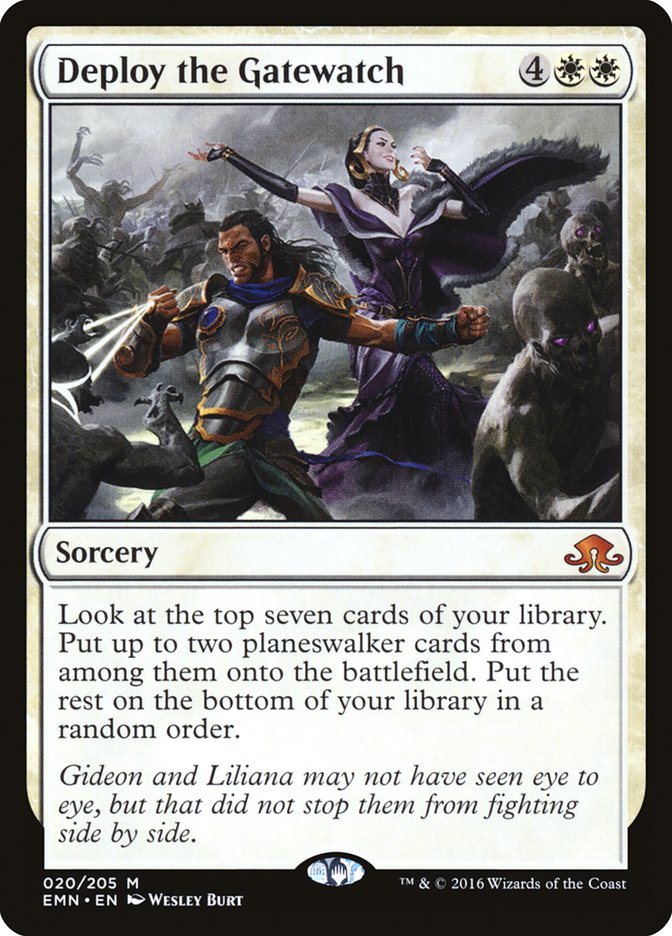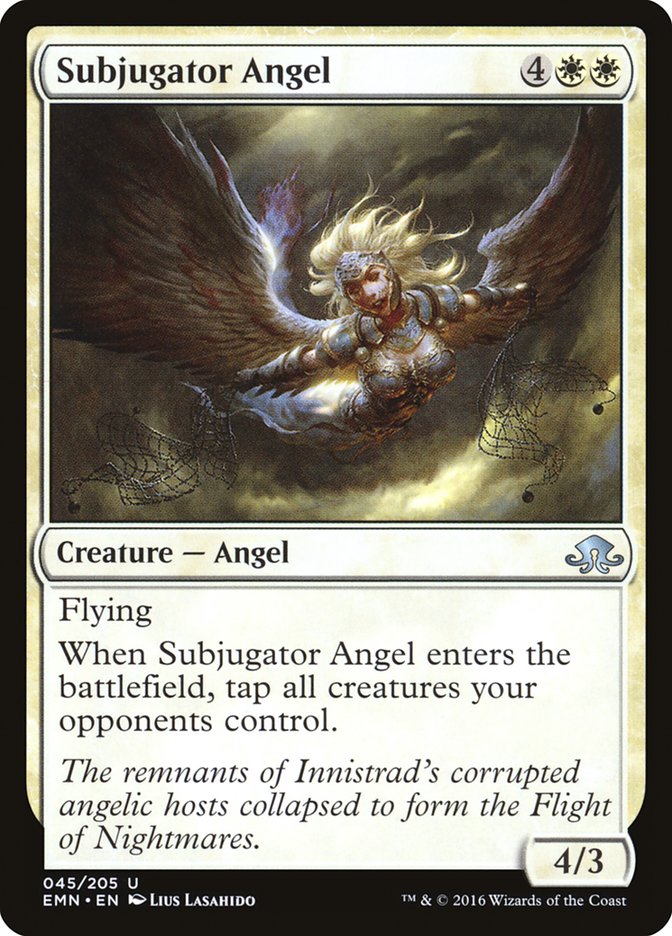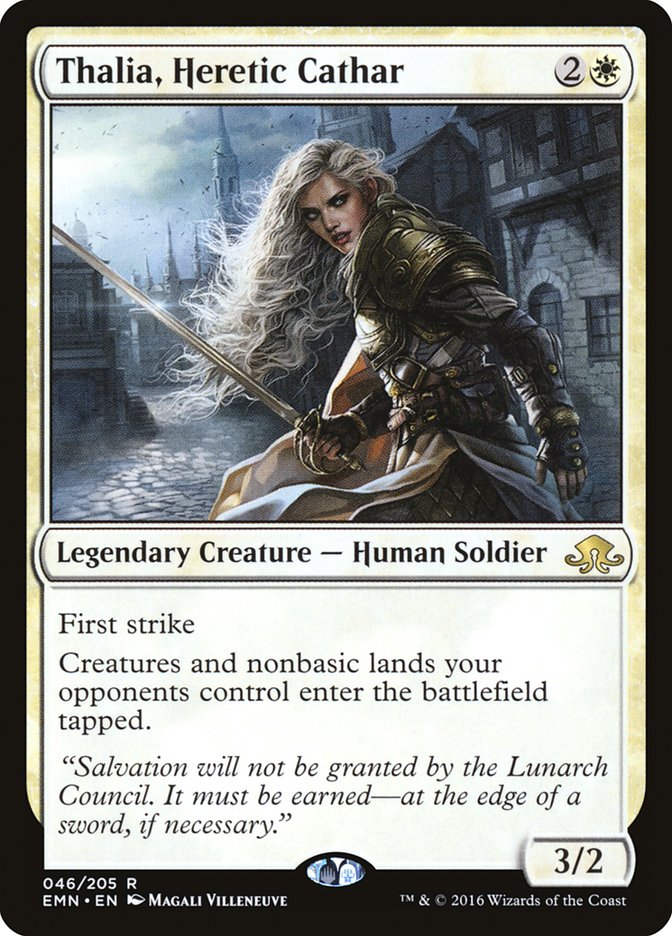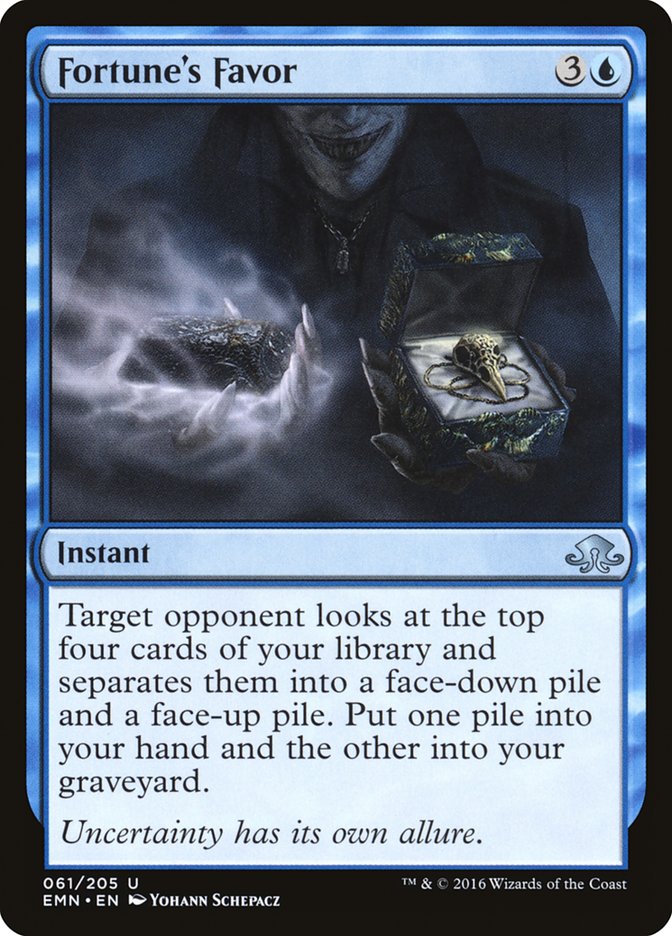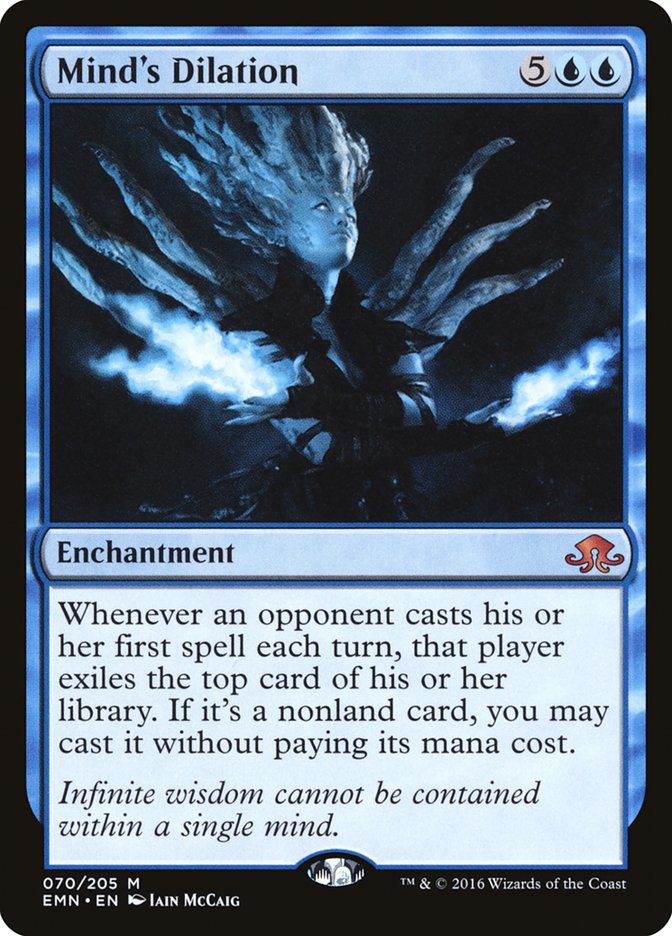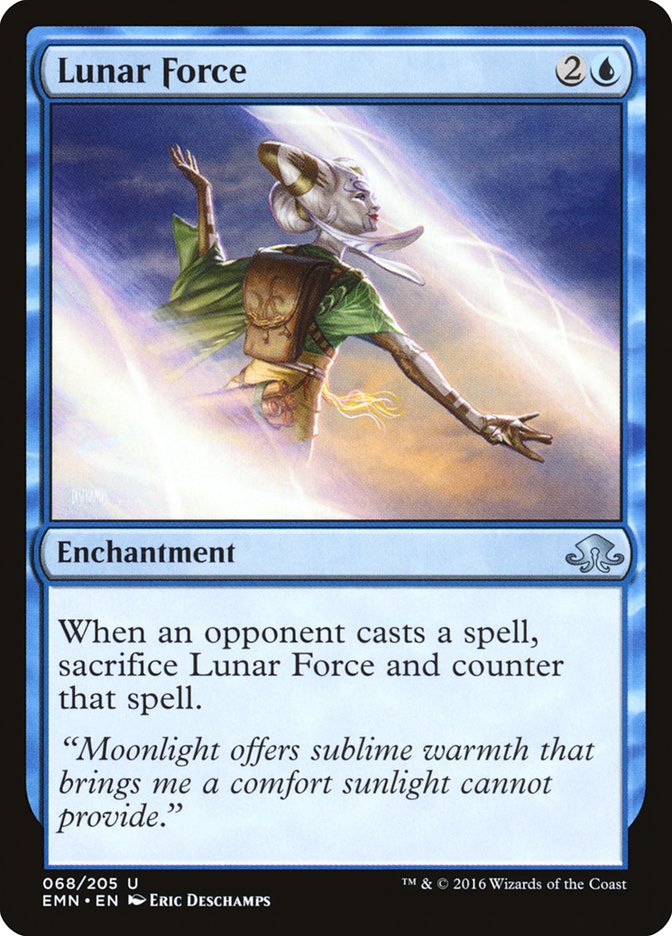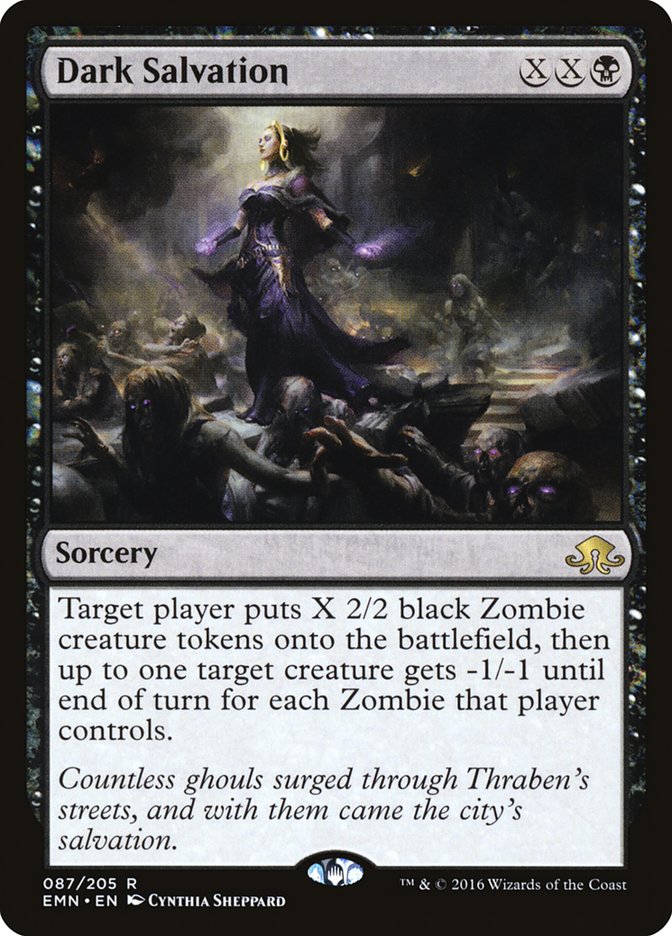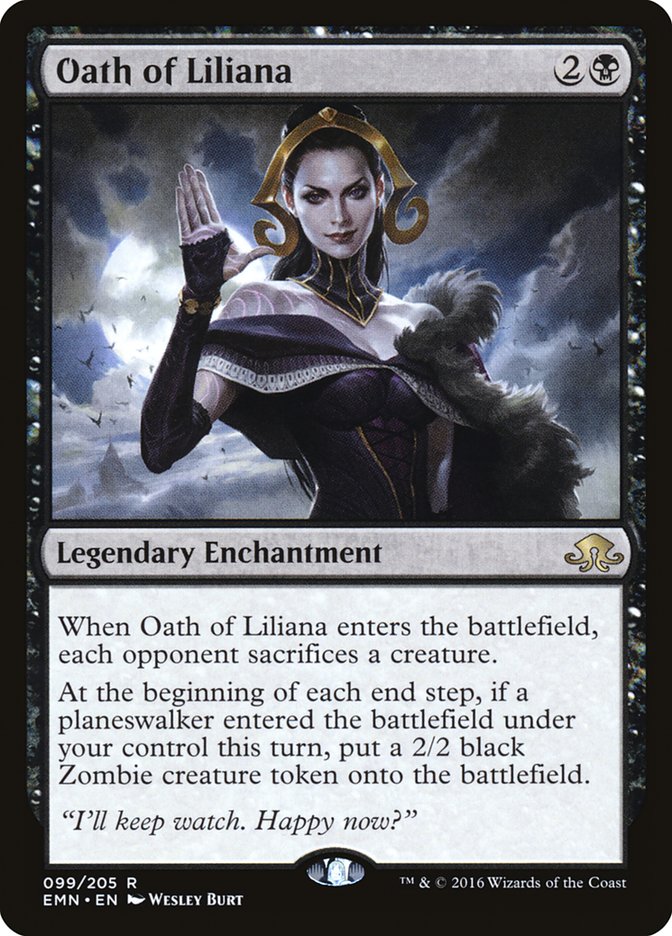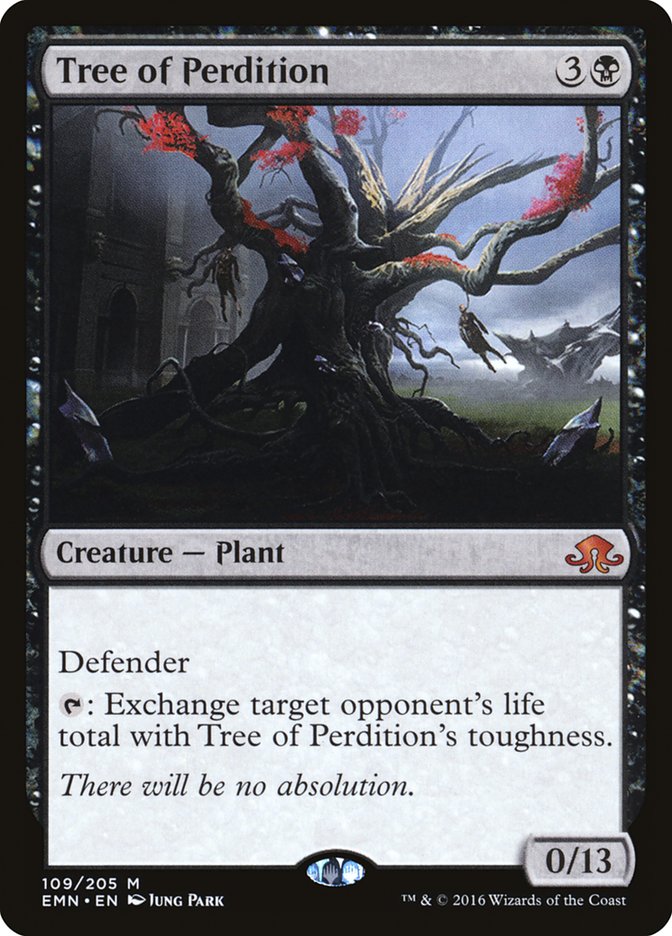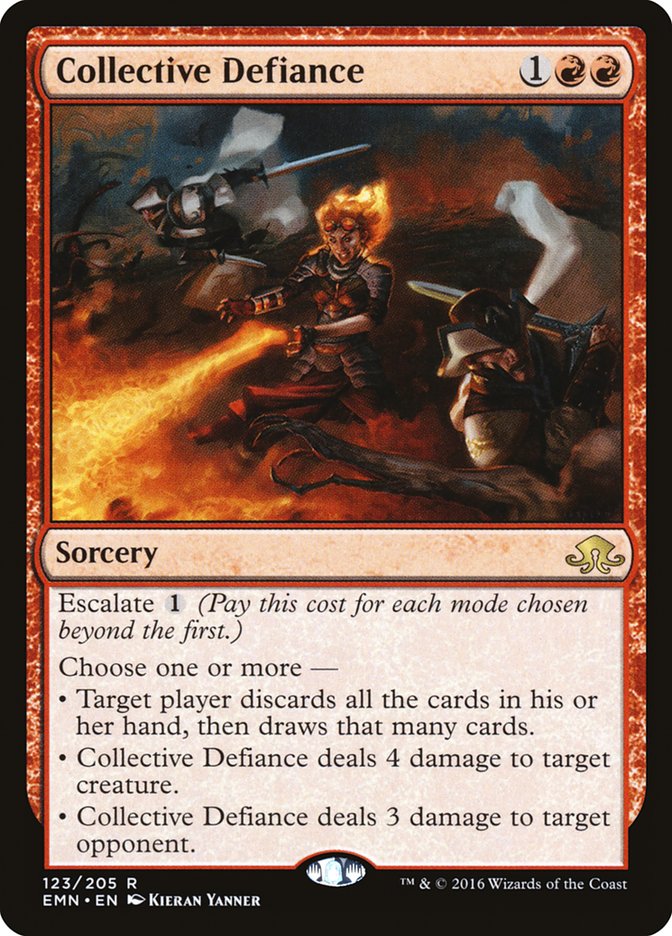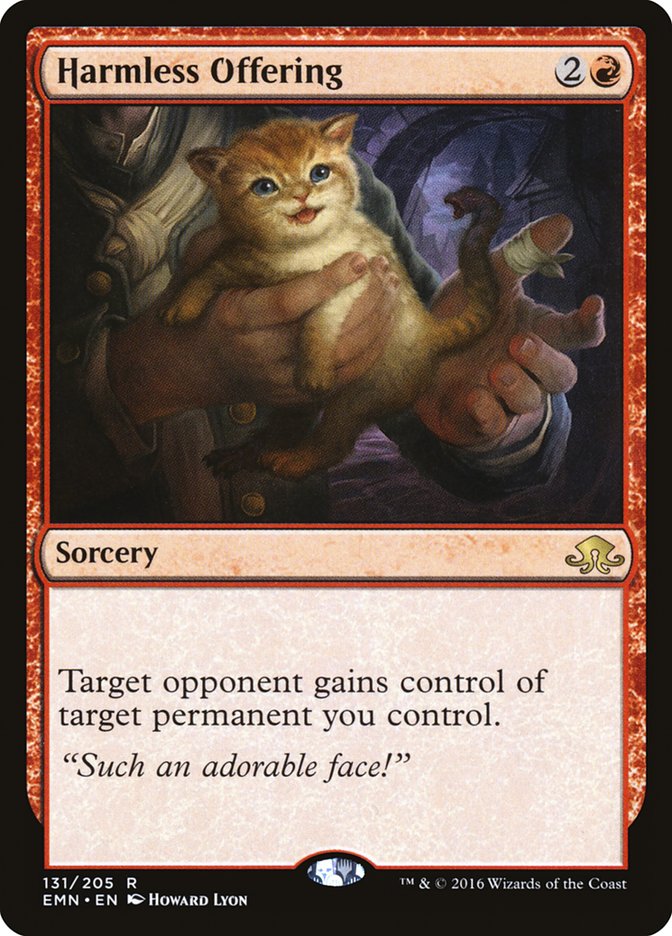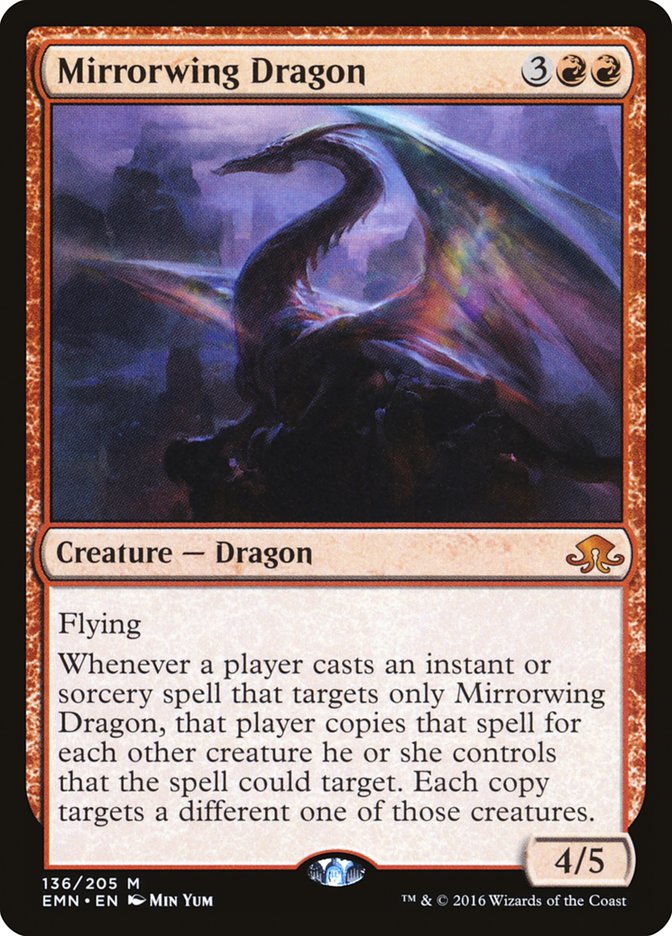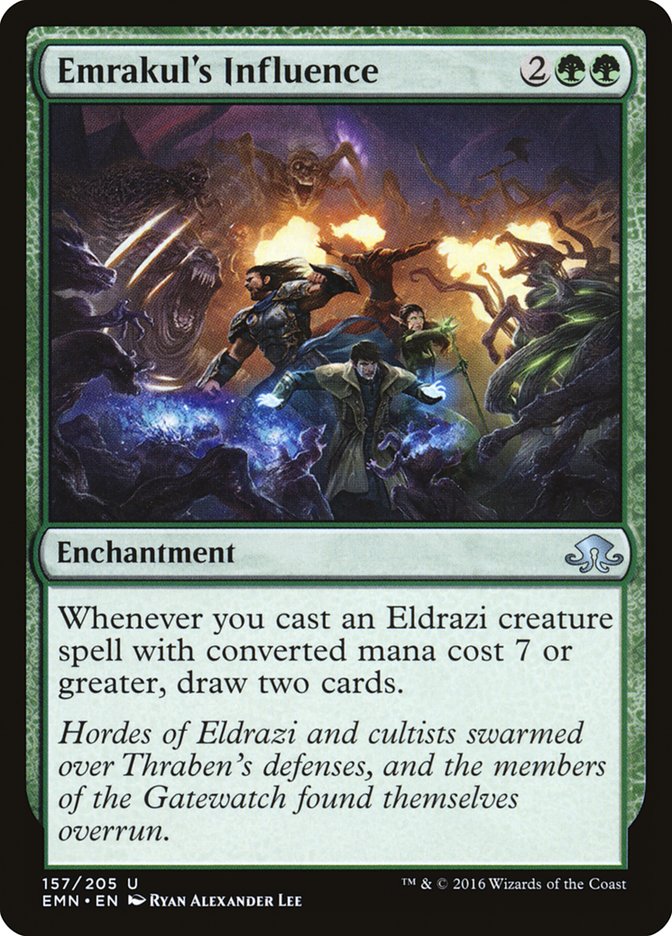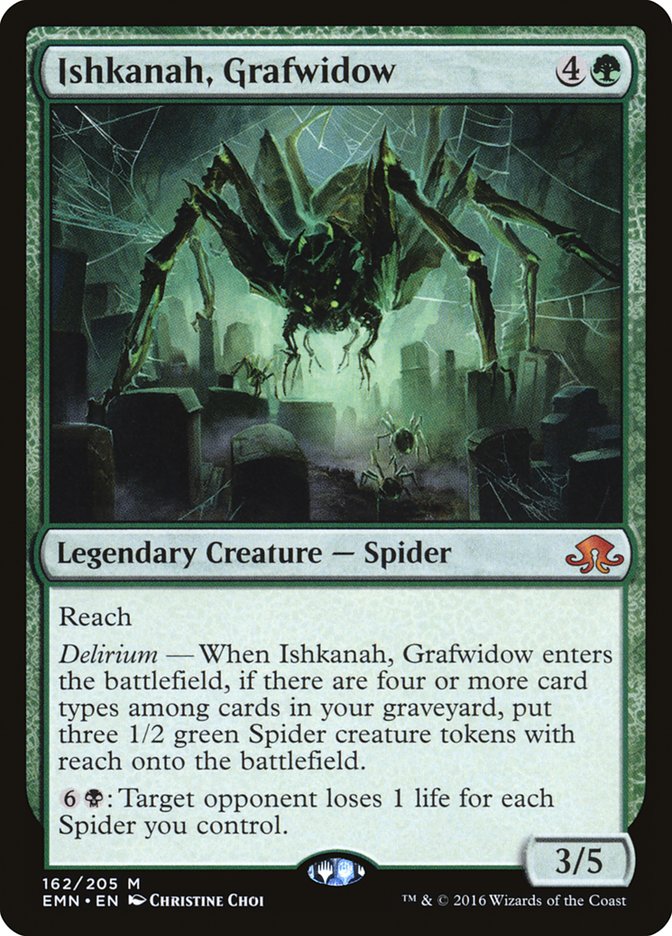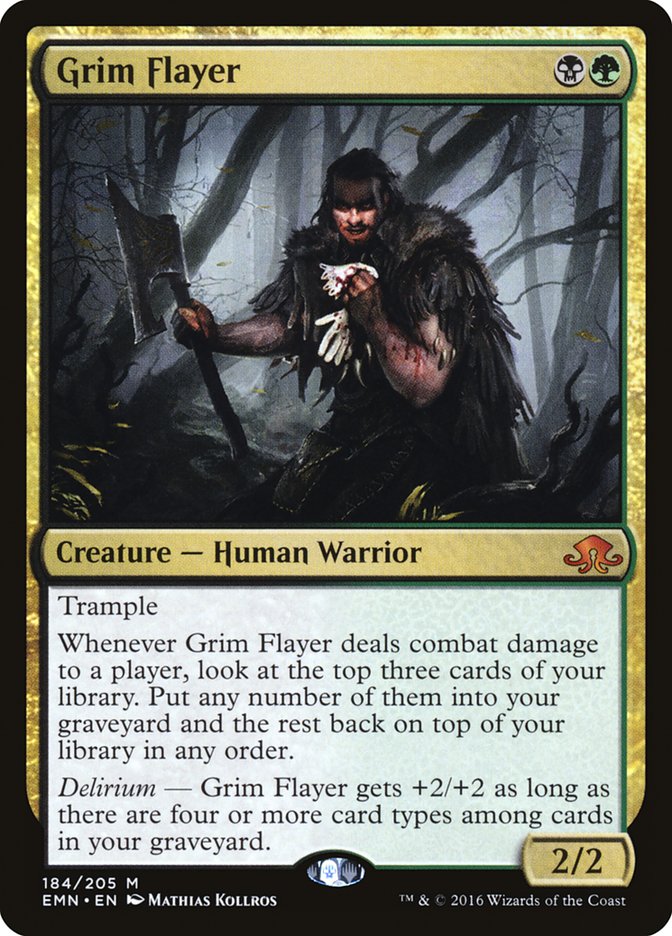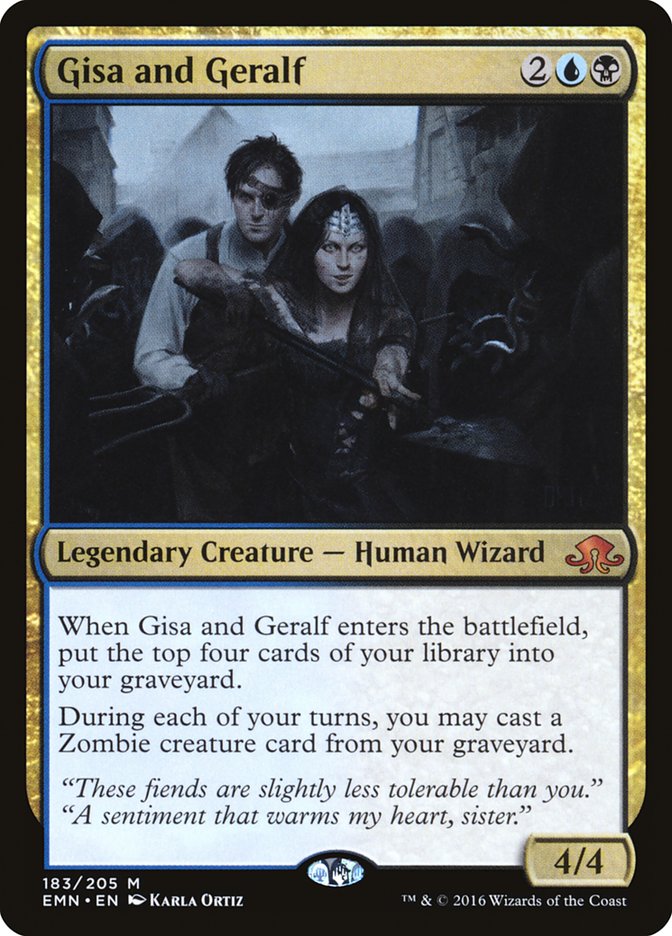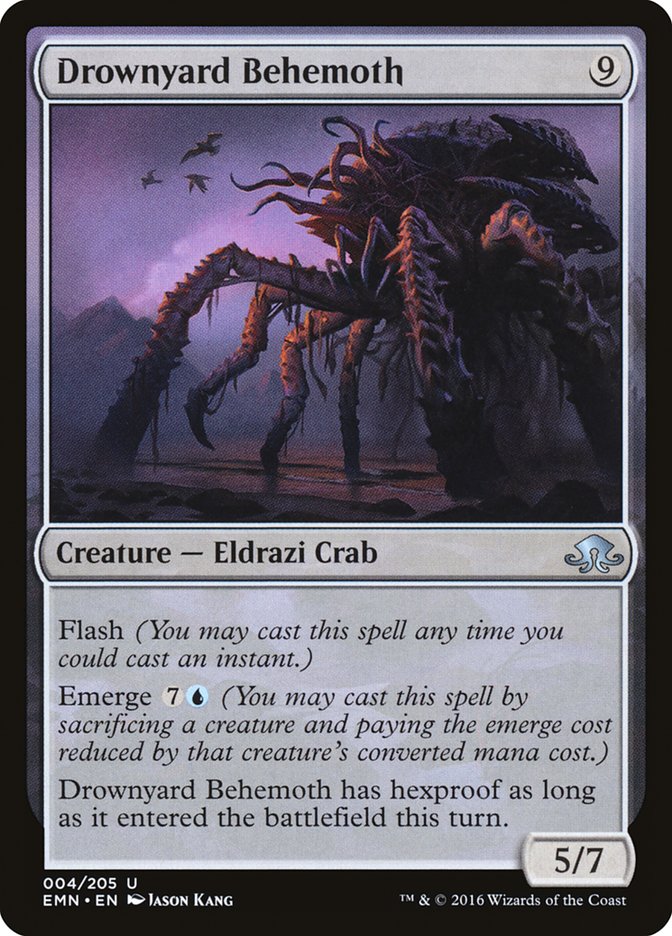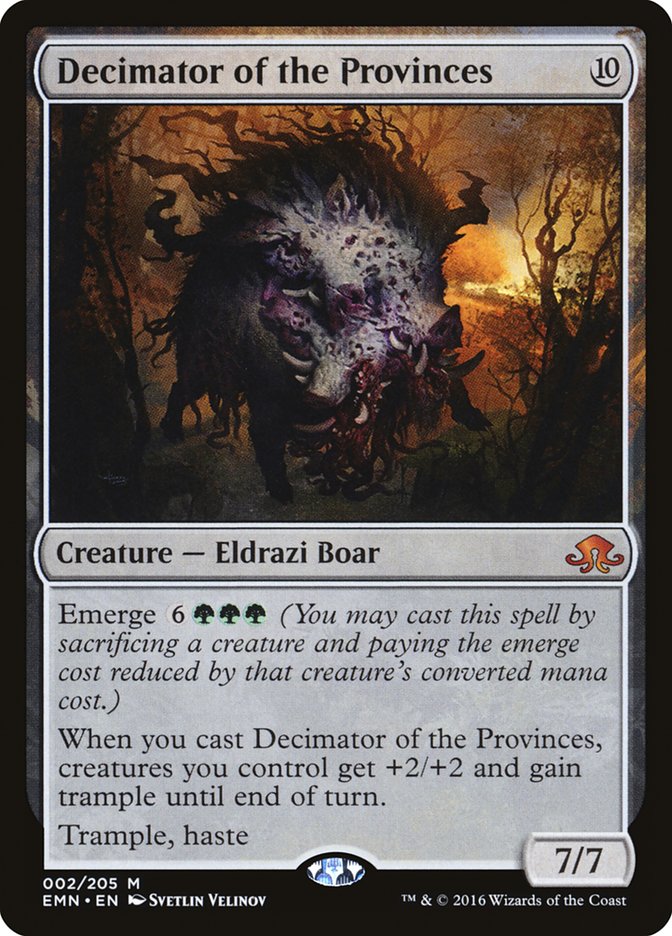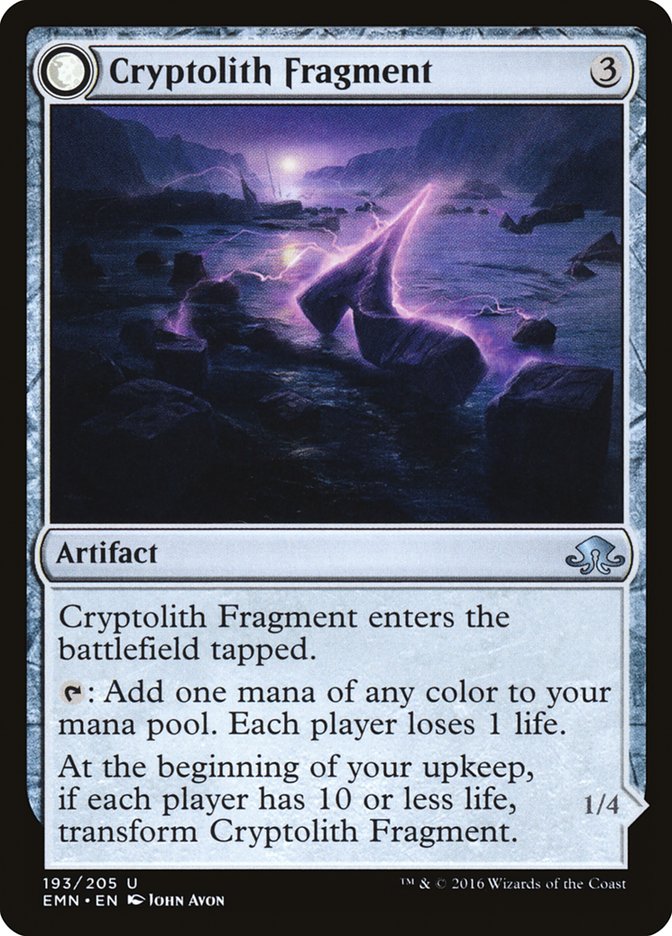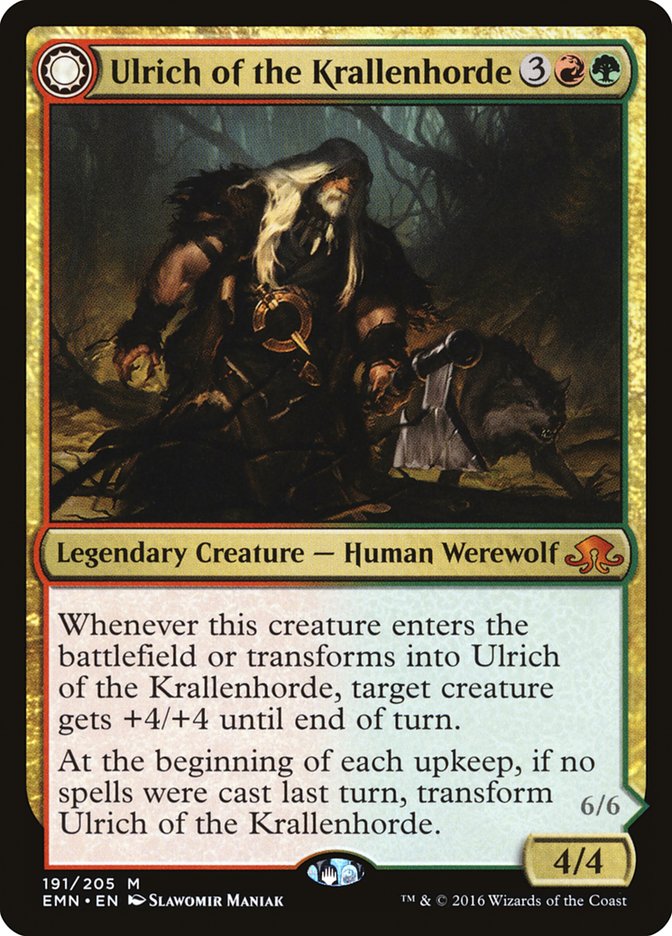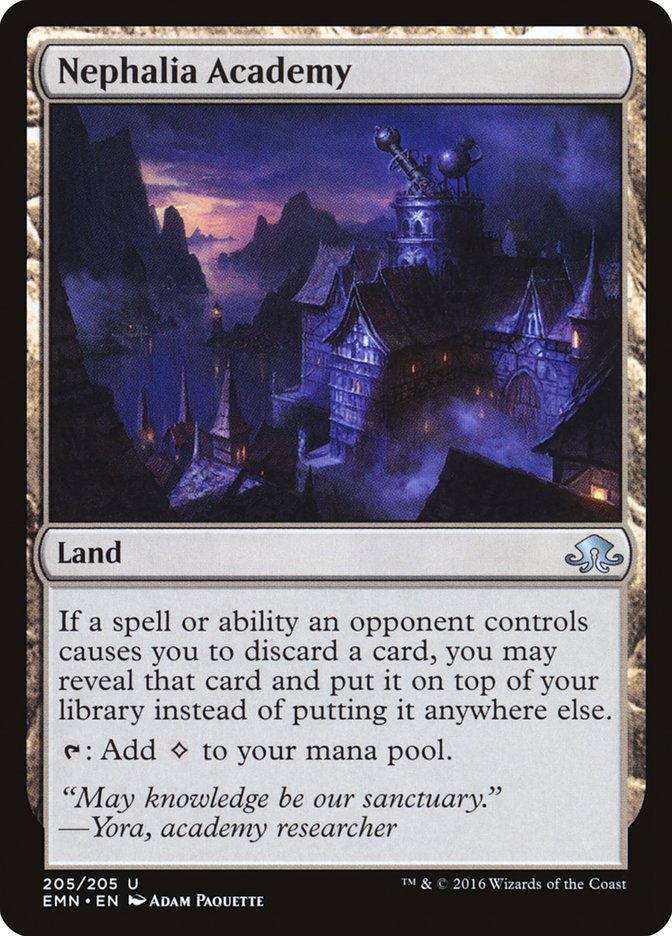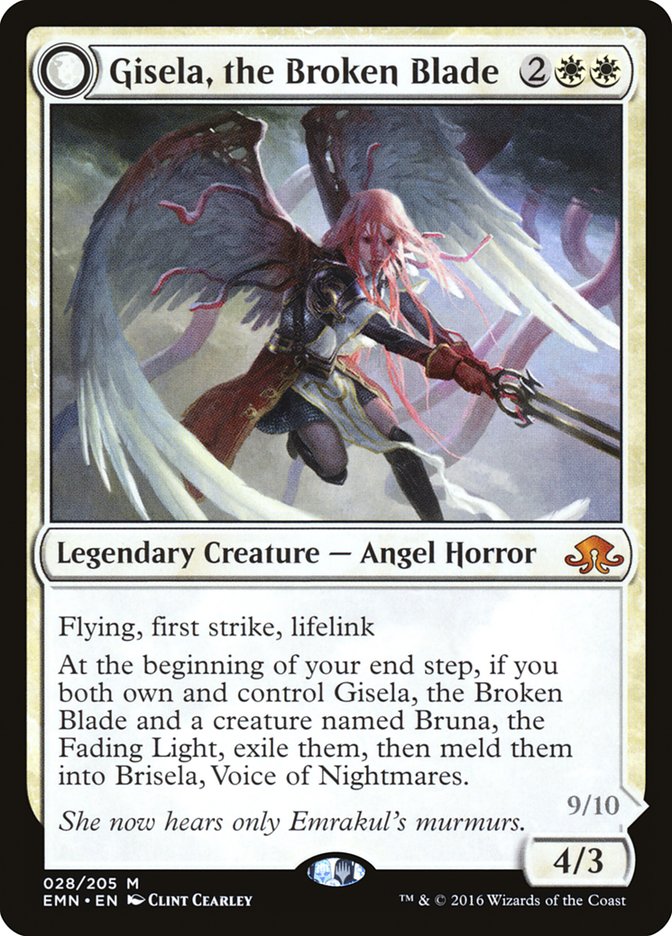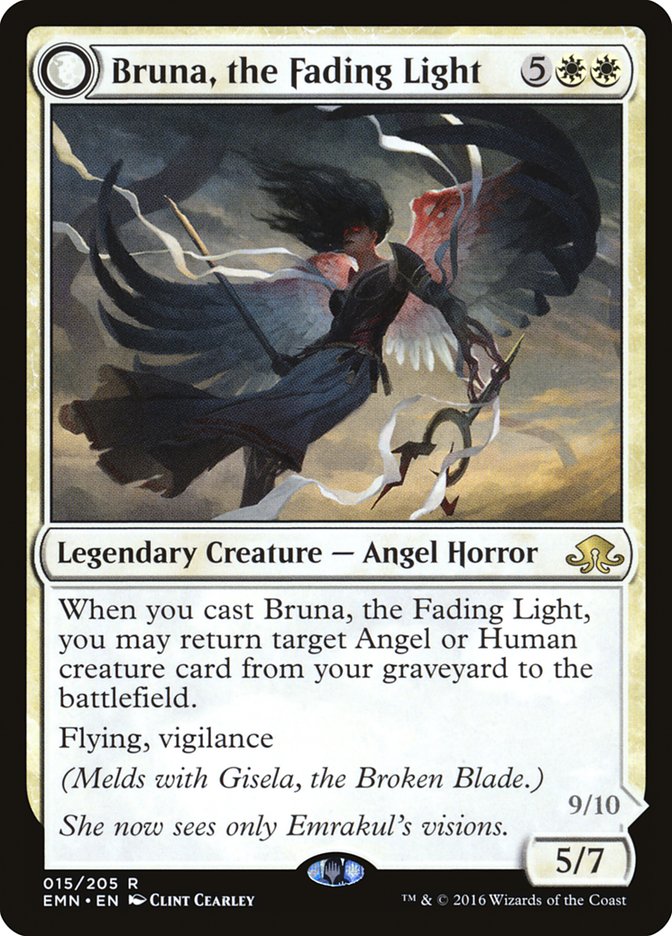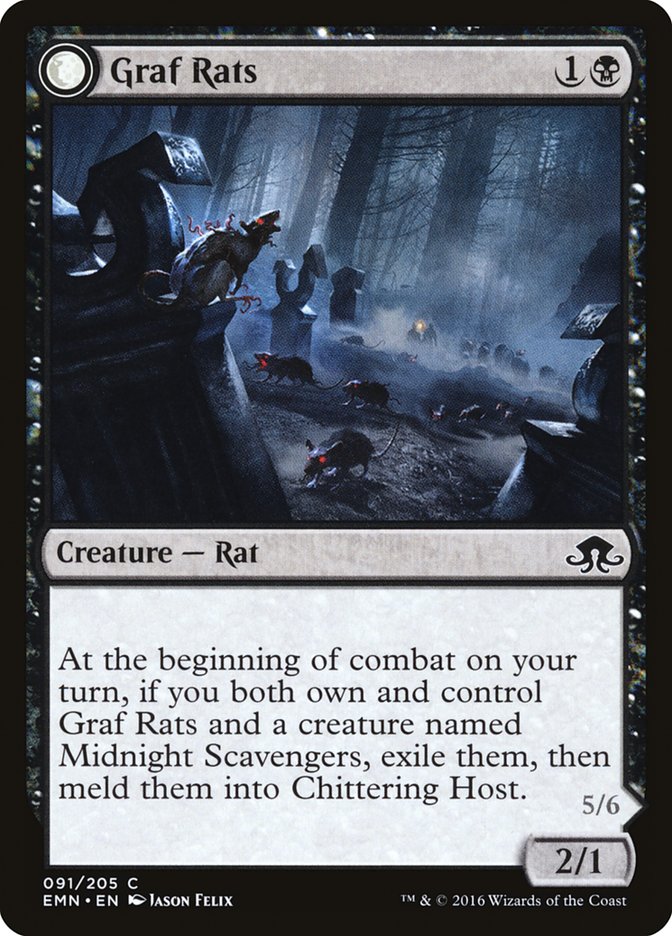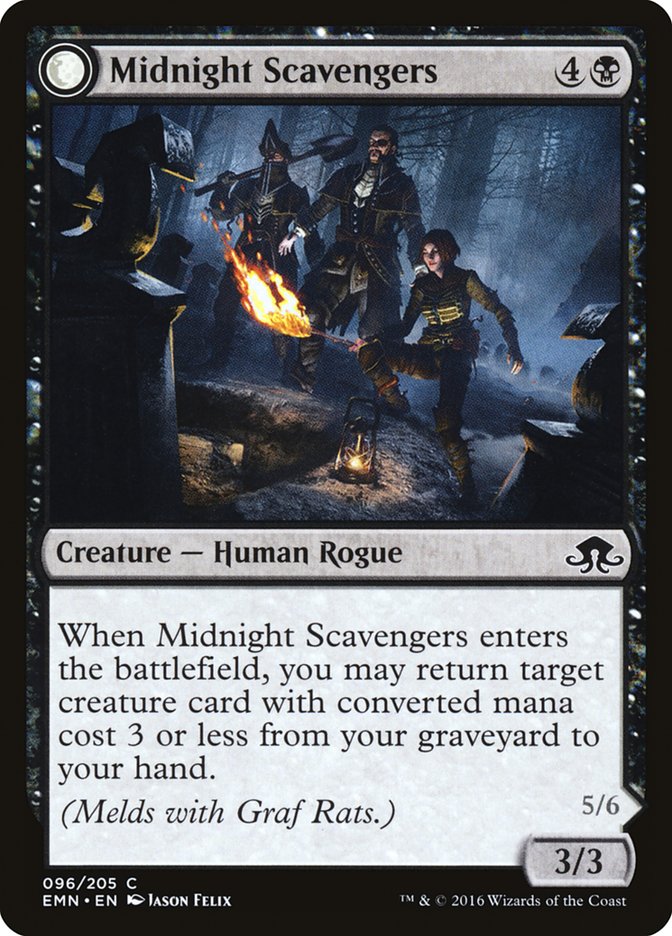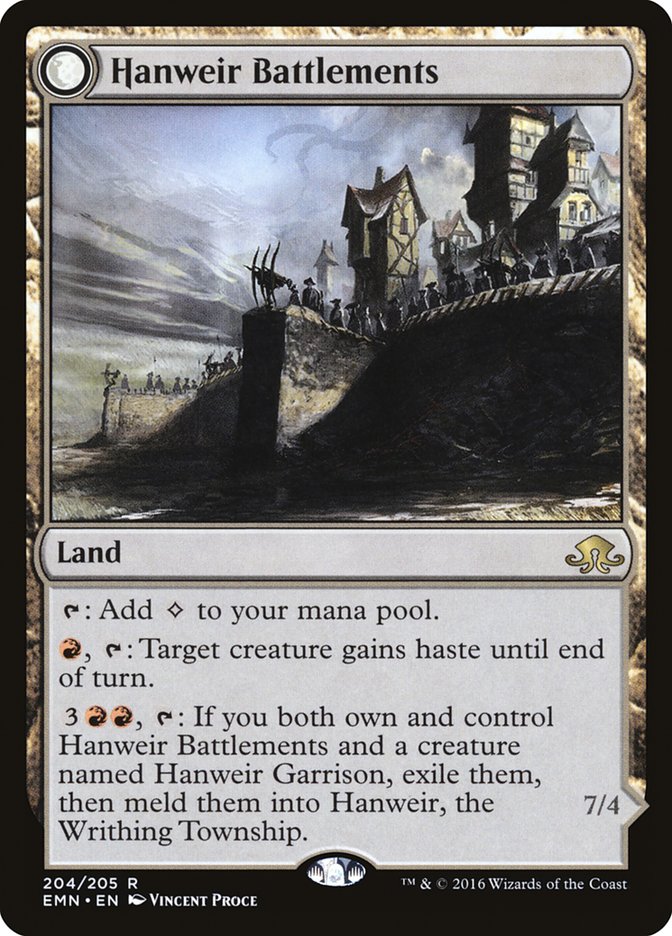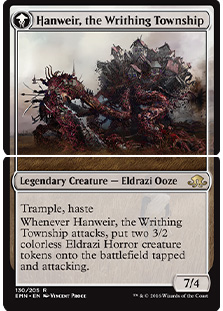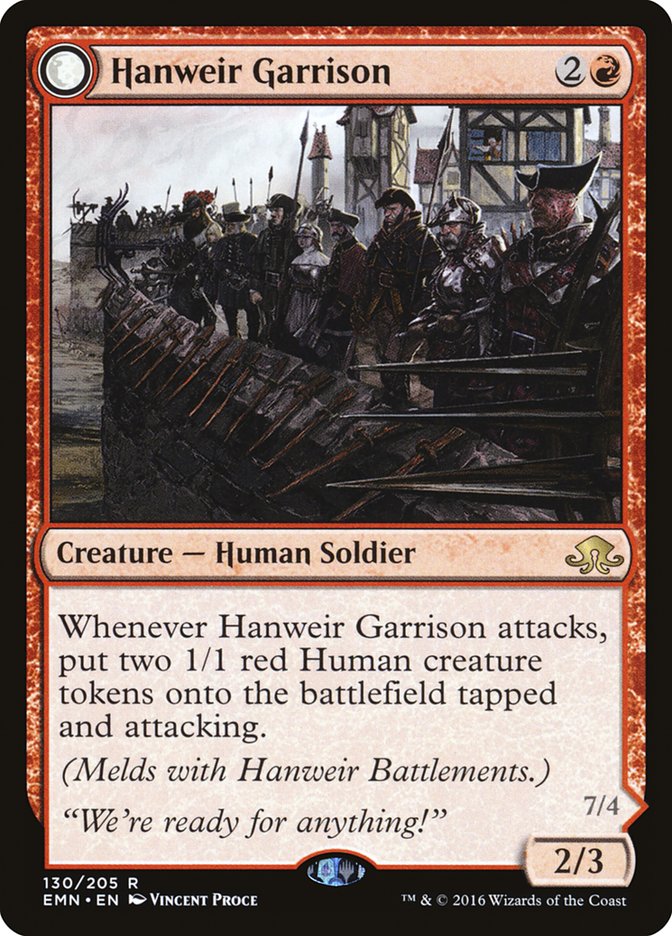The Eldritch Moon has risen. What light will it cast on you?
I’m going to change up the review style just a touch. I’m going to look at each color individually, give it a grade, and point out some of the highlights, picking three sure winners in each color. Along the way, I’ll offer a few opinions on decks that these cards might like to go into or other cards which pair with them nicely.
Remember that this review is for Commander only. Eldritch Moon looks insanely fun to draft and I’m sure there will be immediate-impact cards for Standard and Modern, but I’m only look at them from the viewpoint of the 100-card decks. For the first time in a while, I’m a little less excited about this set than others as it relates to Commander. There are a few cards which get my motor running, but for the most part, the density of definitely-getting-played cards is lower than we’ve recently seen. That’s not to say that all is gloom; there are plenty of cards you’re going to find spots for.
White
Blessed Alliance: With all the indestructible running around, making opponents sacrifice creatures is a good idea. This card made me think about picking up Wing Shards for my Rotisserie Draft League.
Collective Effort: Other cards with escalate have you pick and choose, and sometimes you’re not going to care about some of the modes. With Collective Effort, you’re quite likely to want to do them all, since you’re reasonably sure you’re going to find targets for the first two and you’ll be playing it in a deck in which those +1/+1 counters matter.
Deploy the Gatewatch: I hear excitement about this card, but I’m honestly ambivalent. It’s expensive and the only way it’s worthwhile is if you’ve tutored two planeswalkers to the top.
Long Road Home: Especially in environments in which stealing creatures and other permanents are prevalent, you’ll enjoy having ways of getting them back. Long Road Home is also a neat way of getting that nasty -1/-1 counter off of your creature with persist so that it’s ready to do its work again.
Repel the Abominable: There’s a Humans deck in the making with this set. Having your creatures deal combat damage but others not is the kind of blowout you’re looking for.
Subjugator Angel: Now you can Tooth and Nail for Subjugator Angel and Sunblast Angel! I was hoping that it would have flash, but that might bump up the mana cost toward the difficult-to-play range. Still, it’s worth finding room in your Angel tribal deck for it.
Thalia’s Lancers: Our format is full of legendary cards, so Thalia’s Lancers will always provide value. Targets in my Lavinia Blinks deck include Brago, King Eternal; Daxos of Meletis; Elesh Norn, Grand Cenobite; Ephara, God of the Polis; Isperia, Supreme Judge; Kozilek, Butcher of Truth; and Venser, Shaper Savant (not to mention Kor Haven). I suspect that we will see many Gods and Eldrazi follow Thalia’s Lancers into battle.
White Top Three
Selfless Spirit: A splashable Dauntless Escort, Selfless Spirit also flies. For me, it’s a straight upgrade to the Rhino, because it’s cheaper to cast—and I’ll probably be casting it from the graveyard in one version of Karador or another.
Sigarda’s Aid: For one tiny, tiny white mana, you get so much power. Now high-cost Equipment like Argentum Armor is much more palatable. The surprise factor is also extremely valuable—wait until a creature is unblocked to slap that Sword of Feast and Famine on it. Now you don’t really need to play the Cat deck to get all the equipment value.
Thalia, Heretic Cathar: While I don’t like completely taking away the game from the other players, I don’t mind slowing them down a little bit. Thalia is no doubt going to be a house in Standard (and maybe even Modern), but it will quietly be a very good card in Commander as well. If some people want to over-commit to the nonbasic lands, they have to be aware there might be a cost to pay. Obviously, if you want to be rude, you can also play Back to Basics and Stoic Angel.
Grade: C+
A few nice things, but nothing to get particularly excited about.
Blue
Coax from the Blind Eternities: I mention this card mostly to remind you that in Commander, the only part of this card which works is the card in exile; it’s just like the Wishes in that regard.
Contingency Plan: I’ve been promising a dedicated self-mill deck, and Contingency Plan goes right onto the draft list.
Drag Under: The additional mana to draw the card is well worth it, whether you’re bouncing something threatening from an opponent or getting another use out of one of your own cards (like Venser, Shaper Savant, or Mystic Snake).
Fortune’s Favor: I love the gamesmanship involved with Fortune’s Favor. Obviously, you have more info with Fact or Fiction (plus it’s five cards), but this is the kind of card which brings a fun element into the game.
Imprisoned in the Moon: Love the flavor of the card. Unless you’re playing mono-blue, you might have better ways of dealing with a problematic creature, land, or planeswalker—but turning Jace into a land and then whacking him with Tectonic Edge seems like all kind of cool.
Lunar Force: You have to ask yourself if playing this Decree of Silence variant is worth the irrational hate it will draw—and it will. You might not care, or you might realize that just a plain old Counterspell for that thing which is really going to hurt you would be better.
Scour the Library: I’m probably just playing Mystic Confluence in this slot. If I want another version, I’ll play Jace’s Ingenuity and just pay the extra mana.
Unsubstantiate: The flexibility to bounce a creature or a big spell makes Unsubstantiate worth looking at. Sure, Force Spike on that giant Genesis Wave is funnier, but sometimes good play is better than fun play.
Blue Top Three
Identity Thief: I’m on a Clone bender at the moment, so when there’s a new one, I’m always happy about it. With Identity Thief, you have the opportunity to simply remove a nasty blocker and create a similarly nasty attacker, or you can leverage one of your own enters-the-battlefield triggers. It will take some playing around with, as well as some proper assessment of the battlefield state, but I suspect plenty of tomfoolery to be performed with this card.
Mind’s Dilation: A not-broken Lurking Predators that can also cast spells, Mind’s Dilation is very, very strong. You can choose to not cast whatever the card is (unlike Lurking Predators, this one is a “may”) in order to leave it in exile. Mind’s Dilation is the card in the set which is going to create the most epic game states.
Summary Dismissal: Whoa! I suppose if you have a storm player in your group, you have a new answer for them. The perfectly-named Summary Dismissal can bring order to a chaotic stack. Note that it’s not targeted, so it’s going to resolve unless it’s countered by something else. Also note that the spells (and abilities) are exiled, so you can get rid of uncounterable things. You’ll have to be careful here, though, especially with a big stack, just in case you’ve added abilities to it—yours will get countered, too. This will be the chase card of the set. It’ll be difficult for me to choose the one deck this goes into—as well as sticking to my promise of putting new cards into only one deck.
Grade: A-
There are a number of tapping mechanics which aren’t all that frequently played in the format, meaning that there aren’t that many blue cards which will see action. The ones that will, however, are top-shelf. Mind’s Dilation and Summary Dismissal can arguably battle for the best card in the whole set.
Black
Cemetery Recruitment: Hey Zombies, it’s your birthday.
Dark Salvation: Okay, it’s no Noxious Ghoul—but if you’re already playing Noxious Ghoul, then Dark Salvation could be a thing.
Gavony Unhallowed: A nice addition to your Zombie deck, since you know you’re going to be sacrificing your creatures and whatnot. It’s not Khabal Ghoul, but it’s decent enough.
Oath of Liliana: Making everyone else sacrifice a creature and you not having to makes Oath of Liliana a kind of upgrade to Merciless Executioner, but it’s much harder to get repeat uses out of an enchantment than it is a creature. You’d have to be playing a “super” Superfriends deck in order to get any real mileage out of the second ability.
Black Top Three
Cryptbreaker: Because it costs almost nothing to cast, there’s room to work with it. Zombie decks may have a little trouble drawing cards (although adding blue to Zombies back in Innistrad has gone a long way to solve that problem), so Cryptbreaker can help. It can also help with making a Reanimator deck—putting into the graveyard the creatures you want there and then drawing the cards to get them back onto the battlefield.
Liliana, the Last Hope: Especially if she hits the battlefield early, you’ll have a reasonable chance of getting Liliana’s emblem. With the -2 ability, you can put any creature card back into your hand, not just one of those that you milled, but I’m honestly concentrating on getting up to 7.
Tree of Perdition: This could be a big ouch on turn 5. If you play it, prepare for the consequences (like getting it hit with Phthisis). It’s almost as bad as Sorin Markov, although it’s nowhere near as oppressive as Magister Sphinx. Remember that you can always help someone whose life total is less than thirteen. Get those points for saving people!
Grade: D
The fact that I struggled to find three cards I really like earns black a barely-passing grade. Again, what makes for a cool Draft environment doesn’t always translate to Commander.
Red
Blood Mist: Double Strike can be quite deadly, especially on a commander. There are enough red creatures with haste (or effects which give haste) that having Blood Mist and an empty battlefield can turn quickly into a kill. Obviously, it pairs with Xenagos, God of Revels for some nice overkill.
Collective Defiance: You’re probably wheeling yourself most often (unless you’re playing a Nekusar, the Mindrazer deck), so adding one mana to get rid of a creature isn’t so bad; adding one to Lightning Bolt someone seems fine.
Harmless Offering: Because kittehs.
Stensia Banquet: The cantrip is what makes Stensia Banquet even remotely playable. It’s reasonable to expect four to seven damage from the card (plus the occasional big blow), but in an emergency situation, the damage is secondary and the card is important.
Red Top Three
Mirrorwing Dragon: If you cast Might of Oaks on Mirrorwing Dragon, your whole team gets +7/+7. If someone casts Murder on your Mirrorwing Dragon, their whole team gets Murdered. Good beats all around for your Dragon deck. The super-combo with Mirrorwing Dragon is Soul’s Majesty.
Nahiri’s Wrath: The card had me very excited until I realized “players” was missing. Still, you can deal some solid damage to creatures, which is significant if Repercussion is on the battlefield, but at the cost of cards. Of course, if those are creatures you want to reanimate later, line up your Flayer of the Hatebound and get to work!
Savage Alliance: This is a sneaky-good card. The extra two mana is worth it for the additional two modes. Assuming you have a decent army, all your creatures having trample is great. The second and third modes then ensure you’re going to deal more damage, since you have to assign less to each creature in order to trample over to the player.
Grade: D+
Only slightly better than black.
Green
Clear Shot: It’s not fighting; your creature is the only one dealing damage, which makes Clear Shot even better on a creature with deathtouch.
Crop Sigil: Perhaps as an early drop to get your graveyard shenanigans underway; later in the game it simply becomes a slightly worse Restock (which you don’t have to exile).
Emrakul’s Evangel: If your team is about to get wiped out, then Caller of the Claw is a better choice here. If you have reasons to sacrifice the creatures you have (like Grave Pact or they’re 1/1s), then you can upgrade your squad. This pairs nicely with things which trigger when your creatures die, like Blood Artist
Emrakul’s Influence: How many times will this have to trigger in order to be worth it? For me, at least three. If you’re casting that many Eldrazi, a little extra card draw is just winning more—but the 2GG mana cost makes it very attractive.
Grapple with the Past: A nice mini-Mulch, you can then return something that was already in the graveyard. This is especially useful if someone has used targeted graveyard removal on a card which you’d rather not have exiled.
Permeating Mass: The kind of ability which entire horror films are built around, Permeating Mass is a pretty spicy rattlesnake.
Primal Druid: Ramp in all its forms is fine. Primal Druid probably belongs in an Ezuri, Claw of Progress deck so that it can trigger Ezuri and then get you another land so that it can help pay the extra two when you inevitably have to recast Ezuri.
Splendid Reclamation: Hurray. Another card for the Dredge decks to love. I don’t mind Dredge decks so much, except that if the game were played on clocks, they’d constantly be timing out.
Green Top 3
Eldritch Evolution: Even if Eldritch Evolution is only a one-use card, there are plenty of things worth sacrificing in order to get something strong onto the battlefield. In your Karador, Ghost Chieftain deck, sacrifice Wurmcoil Engine to get Ashen Rider or Angel of Despair. Sacrifice Solemn Simulacrum (and draw a card) to get Kokousho, the Evening Star. The possibilities are only limited by your imagination. A top-flight card.
Ishkanah, Grafwidow: Friend of the show and Spider Spawning evangel Brian David-Marshall will love Ishkanah. So will you when your Spiders start creeping out your opponents simply by being there.
Ulvenwald Observer: Soul of the Harvest’s Treefolk cousin will be worth its weight in bark when those Wraths of God happen. In the worst-case scenario, it draws a card for itself. In the best case, you have Cauldron of Souls and all your beefy creatures persist back onto the battlefield and you draw cards for them.
Grade: B
Enough good things to get excited about and enough bit players to do some of the things you want to.
Multicolored
Grim Flayer: The necessary condition of dealing combat damage is fine if you get Grim Flayer out early when there’s likely always at least one person to attack. Later in the game, with lots of big creatures on the battlefield, it’s less exciting.
Heron’s Grace Champion: Yeah, there’s definitely a Humans deck in the making.
Mournwillow: All those Plant tokens you left back to block this turn? Too bad.
Ride Down: Good enough destroying a big blocker; getting in some damage on top of it is a great bonus.
Spell Queller: What I suspect will be an absolute monster in other Constructed formats will also get some good play in this one. You’d better believe Lavinia will be blinking Spell Queller.
Multicolored Top Three
Campaign of Vengeance: Campaign of Vengeance is slightly pricier than Hellrider, but it also can’t get killed by getting blocked. The life gain makes it worth the extra mana and color. Just remember that it shares a color with Storm Herd.
Gisa and Geralf: Karador-like ability moving into blue for Zombies? Ding! Love it. Zombie self-mill gets very serious all of a sudden.
Tamiyo, Field Researcher: Obviously, Doubling Season into the emblem is the dream, but using the +1 ability to draw cards is worth the cost under normal circumstances. Tamiyo is in Bant, so you have plenty of both offensive and defensive weapons to try to get her to seven loyalty. Great, flavorful design on a very strong card.
Grade: A
Excellent work on this section. Love nearly all of them.
Colorless
Drownyard Behemoth: Great flavorful design, as the first turn, the Crab is in its shell. Flash is extremely useful, as you can sacrifice something that’s going to die because it’s been targeted with Murder or some such.
Lashweed Lurker: Putting a permanent on top of someone’s library, especially an expensive one, costs them a turn and a draw. Doubly delicious.
Mockery of Nature: A little bit of battlefield control on a body big enough to matter seems reasonably good, but because there are cheaper options, there would have to be a reason to play Mockery of Nature over Reclamation Sage or Conclave Naturalists. That reason could be as simple as graveyard recursion or Martyr’s Bond.
Coloress Top Three
Decimator of the Provinces: For nearly every creature with emerge, we’ll assume that casting for full cost won’t happen that often. For basically GGG, Decimator of the Provinces gives a mini-Overrun. That’s right up my alley.
Elder Deep-Fiend: Flash again is extremely useful here. Even if you’re paying the normal cost, which is only one more mana, tapping four permanents gives you some great strategic options.
Emrakul, the Promised End: Sure, I get that it combos with Stranglehold. If that’s how you want to play it, sure. It seems like you could probably make a better deal with that player if they actually get their turn. At least in my local environment, I see this version of Emrakul being a way of two players teaming up against the actual power in the game (unless one could neuter the power by taking his or her turn, which isn’t always the case). Sometimes, Emrakul the Promised End is just going to be a giant, flying, trample monster to be dealt with, and that’s just fine by me, too. All in all, a strong card, but nowhere near worth panicking about.
Grade: A
Longtime readers know I love sacrifice outlets (although those are usually usable as instants). Turning something smaller which has served its purpose (like Duplicant) into something much larger and scarier hits all the right buttons for me, especially since I love to reanimate creatures from the graveyard. The emerge mechanic is simply brilliant. The abilities are strong without being abusable (since they’re “cast” as opposed to “enters the battlefield” triggers). I suppose the question is now if my Animar, Soul of Elements Do-Over is Eldrazi tribal or not.
Double-Face
Grizzled Angler: Nice thematic card, although a little narrow.
Shrill Howler: Just like with Spawnwrithe and Giant Adephage, I like creatures which make their own friends to bring along. Too bad they’re Horrors instead of Werewolves, because there’d be a tribal thing there.
Ulrich of the Krallenhorde: I had hoped for a little more. It seems to me that the legendary Werewolf would be the one able to control its transformation.
Double-Face Top Three
Crypolith Fragment: I’m not even sure I care about transforming it. Getting mana of any color is already good; draining everyone is even better. It’s loss of life, so something like Guardian Seraph or Urza’s Armor can’t protect you. Thematically, I love the imagery that just the hint of Emrakul can make your opponents lose life, but I’d rather not get into the territory which transforms it.
Docent of Perfection: Seems a little like a less-dangerous Talrand, Sky Summoner. Goes right into your Wizard deck and gives them one of the few things they don’t normally have: flying.
Voldaren Pariah: Combo with Endrek Sahr, Master Breeder for just enough meaningless creatures to sacrifice. Add Dictate of Erebos for some real hilarity. Then smash face with your 6/5 flyer.
Grade: B
The good ones are good but not great. There aren’t really terrible ones, but most of them are mediocre.
Artifacts and Lands
None of the artifacts interest me, so we’ll head straight for both lands in the set.
Geier Reach Sanitarium: I’m not a fan of helping other players draw cards, but making them discard seems okay in a deck that likes to use opponents’ graveyards with cards like Sepulchral Primordial and Memory Plunder.
Nephalia Academy: It’s not a major issue in my local environment, but if discard is a thing in yours, Nephalia Academy is reasonable protection without using up a slot (like with Library of Leng).
Meld
Gisela, the Broken Blade and Bruna, the Fading Light: It’s easy to lose Gisela’s individuality in the whole meld thing, but a 4/3 flyer with lifelink and first strike is nothing to sneeze at. Bruna is without a doubt worth playing even if you’re not playing Gisela, especially in an Angel or Human tribal deck because of her cast trigger. The melded creature, Brisela, Voice of Nightmares, is particularly absurd. Not being able to cast any spells with converted mana cost 3 or less covers a great deal of territory—then of course there’s the issue of the giant flying, vigilant, first-striking, lifelinker.
Graf Rats and Midnight Scavengers: Individually, neither card is particularly interesting or new. Chittering Host is decent, with menace being the relevant part.
Hanweir Battlements and Hanweir Garrison: Hanweir Garrison by itself is fine, so long as you can keep it alive, since it invited friends along to the battle. Things get rougher when the cards are melded into Hanweir, the Writhing Township, since it brings along significantly larger friends. With “only” four toughness, the right call seems to just kill it if it’s attacking you (and you can), because the long-term damage is going to be much worse.
Grade: A
Despite one of the three pairs being mediocre, the mechanic itself is great. The other two pairs are bomby, so full marks.
Big props to lead designer Ken Nagle and lead developer Sam Stoddard and their teams on the mechanics and design of the set as a whole. Overall, the set gets a solid B. While it might be the least splashy Commander set in a while, it’s coherent, consistent, colorful, and captures the world’s flavor extremely well. There are certainly enough thought-provoking choices to both get you brewing and wondering what you’re going to move out of existing decks to slot in the new cards.
Our regular Deck Without Comment feature will return after release season.
Check out our awesome Deck List Database for the last versions of all my decks:
EREBOS and the HALLS OF THE DEAD;
KARRTHUS, WHO RAINS FIRE FROM THE SKY;
LAZAV, SHAPESHIFTING MASTERMIND;
PURPLE HIPPOS and MARO SORCERERS;
RURIC THAR AND HIS BEASTLY FIGHT CLUB;
If you’d like to follow the adventures of my Monday Night RPG group (in a campaign that’s been alive since 1987 and is just now getting started with a new mini-series called Who Mourns for Adonis? which will set up the saga called (The Lost Cities of Nevinor), ask for an invitation to the Facebook group “Sheldon Menery’s Monday Night Gamers.”


